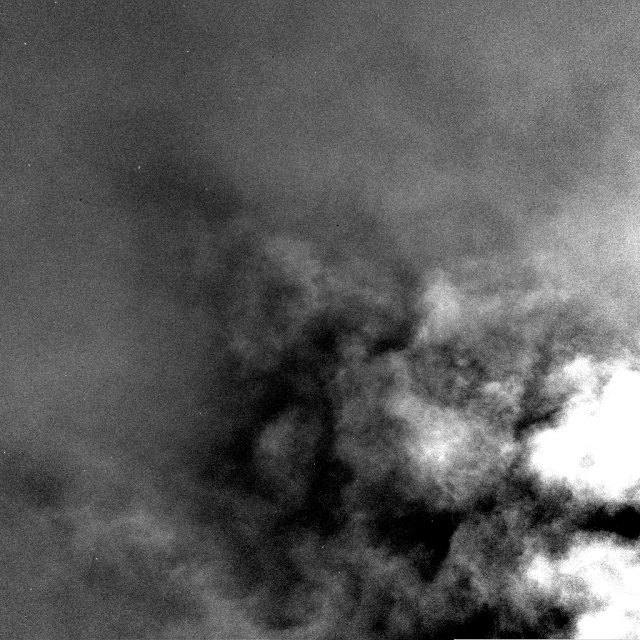NASA's Curiosity rover on Mars is watching the clouds drift by and they're beautiful
The clouds were so faint that NASA employed special imaging techniques to spot them.

NASA's Curiosity rover just aced a bit of atmospheric science on Mars.
The Curiosity rover, now nearing its 10th year of exploring the Red Planet, took imagery of clouds drifting over its exploration site on Mount Sharp (Aeolis Mons) with an aim to measuring their speed.
But it wasn't an easy task, NASA's Jet Propulsion Laboratory noted in a blog post on Monday (Feb. 15), as Curiosity's cameras aren't designed to look up at the sky. Rather, the rover's cameras were meant for imaging Mars rocks and landscape features on its journey to seek ancient signs of habitability.
"Martian clouds are very faint in the atmosphere, so special imaging techniques are needed to see them," JPL said in the blog post. "Multiple images are taken to be able to get a clear, static background. That allows anything else moving within the image — like clouds or shadows — to become visible after subtracting this static background from each individual image."
Related: Amazing Mars photos by NASA's Curiosity rover
The clouds (and their shadows on the surface) were captured in two eight-frame movies captured Dec. 12, 2021 during the 3,325th Martian day, or sol, of the mission. (Days on the Red Planet are slightly longer than the 24-hour cycle on Earth.)
Curiosity used its navigation camera twice to examine the clouds from two different perspectives, JPL said. Two views allows scientists to calculate the clouds' speed and height, JPL said, which in turn provides clues about their composition.
Get the Space.com Newsletter
Breaking space news, the latest updates on rocket launches, skywatching events and more!

"These clouds are very high, nearly 50 miles (80 kilometers) above the surface. It's extremely cold at that height, which suggests these clouds are composed of carbon dioxide ice as opposed to water ice clouds, which are typically found at lower altitude," JPL stated.
The blog post did not mention how fast the clouds were moving, but typical wind speeds near the surface of Mars are roughly 4.5 mph to 22 mph (7 kph to 35 kph), which might be fast enough to provide wind power on the Red Planet.
Follow Elizabeth Howell on Twitter @howellspace. Follow us on Twitter @Spacedotcom or Facebook.
Join our Space Forums to keep talking space on the latest missions, night sky and more! And if you have a news tip, correction or comment, let us know at: community@space.com.

Elizabeth Howell (she/her), Ph.D., was a staff writer in the spaceflight channel between 2022 and 2024 specializing in Canadian space news. She was contributing writer for Space.com for 10 years from 2012 to 2024. Elizabeth's reporting includes multiple exclusives with the White House, speaking several times with the International Space Station, witnessing five human spaceflight launches on two continents, flying parabolic, working inside a spacesuit, and participating in a simulated Mars mission. Her latest book, "Why Am I Taller?" (ECW Press, 2022) is co-written with astronaut Dave Williams.